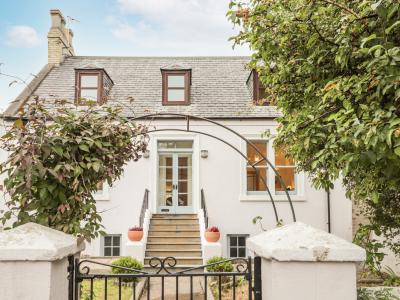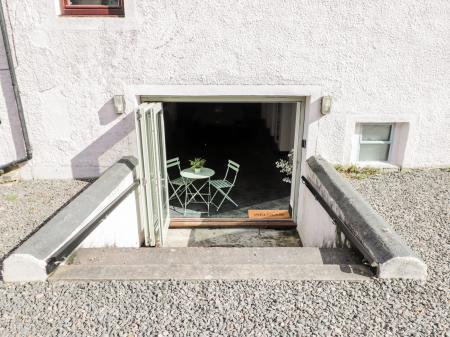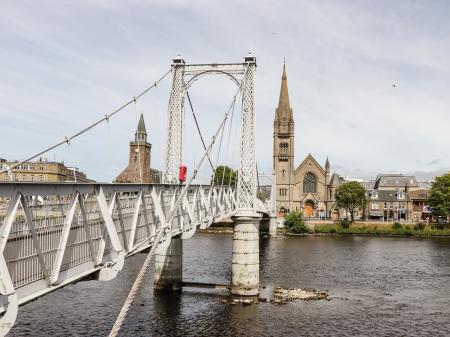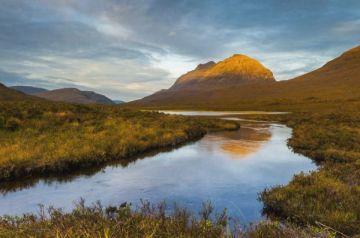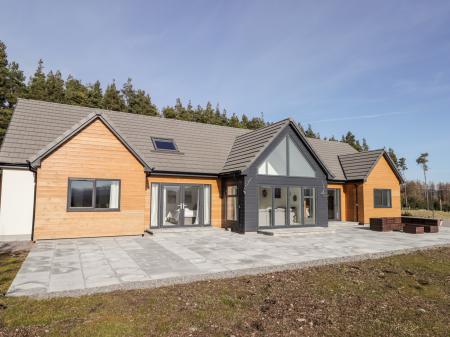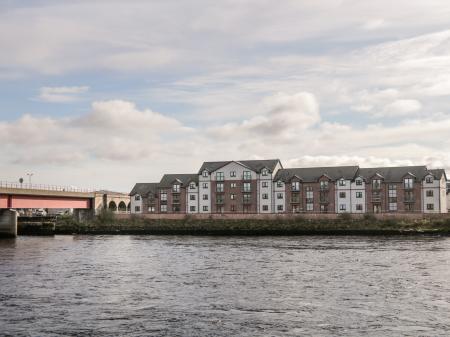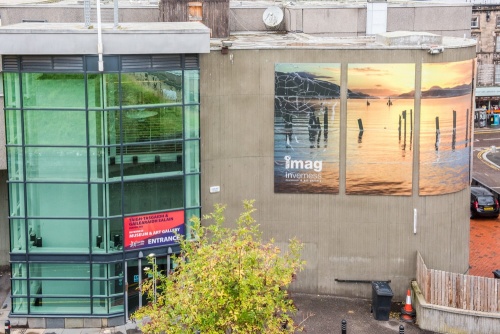
Museum History
In 1825 a solicitor named George Anderson established the Northern Institution for the Promotion of Science and Literature on Inglis Street in Inverness. The Institution's collections included items as diverse as the skin of a boa constrictor and a pair of medieval bishop's gloves from Fortrose Cathedral.
The collections were enlarged in 1835 when the famous Scottish geologist Hugh Millar donated a large number of geological specimens from the Cromarty area.
The Northern Institution folded in 1835 but the collections were maintained, held first at the Inverness Royal Academy and then in the Town Hall. In 1876 the Inverness Scientific Society and Field Club took over management of the collections. The Inverness Town Council gave a plot of land on Castle Wynd, and money for a specially made museum building was raised by public subscription. One of the contributors was Queen Victoria herself.

The museum building, designed by Alexander Ross, was opened in 1881 on Castle Wynd, down the sloping hill beneath Inverness Castle. The core of the first museum was a collection of historic Jacobite artefacts and objects connected to the Highlands.
Later additions included historical Stuart portraits donated by the family of Prince Frederick Duleep Singh, son of Duleep Singh, the last Maharaja of the Sikh Empire. The painting collection was then enlarged with works of Highland landscape painters.
Collections
The collections are spread out over two floors following a timeline of local heritage. On the ground floor are exhibits on the natural history, geography and geology of the Highlands, as well as a collection of carved Pictish stones. Here you can learn about Gaelic language and culture, and the history of Inverness from the Middle Ages.
The first floor holds more recent objects, including the Jacobite collection and objects connected to the Stuarts and Bonnie Prince Charlie, plus Highland bagpipes, weapons, and a special display on Inverness silver. The timeline ends with modern Inverness.

Highlights
There are so many interesting objects on display it is hard to know where to start. One highlight is the Belladrum Roman Coin Hoard, 36 Roman coins found in a field at Belladrum, near Beauly, where they were buried during the Iron age. There is an excellent collection of carved Pictish stones and an unusual Bronze Age cist-stone from Balblair carved with a unique set of unknown symbols. Older still is a piece of a petrified tree trunk from Helmsdale, formed some 150 million years ago.
Medieval highlights include a charter issued by Alexander II in 1236 to the people of Merkinch., and another charter from 1361 documenting the sale of 4 acres of land by a widow named Edona of Auldcastle. Edona used the proceeds from the sale to pay priests at St Mary's church to say prayers for herself and her family.
One memorable exhibit is a first edition Gaelic Bible printed in 1690 for Bishop William Bedell.
Some of the most memorable highlights are in the Stuart gallery on the first floor. Here you will find Bonnie Prince Charlie's death mask and a plait of his hair. The Prince, of course, was defeated at the Battle of Culloden, just outside Inverness, and one of the exhibits is a British Cavalry pistol lock plate found in Culloden Woods. The pistol's hammer shows that it had been fired.
In a nearby case is a nightdress and cap worn by Charles I and an ornate brooch containing locks of hair from Charles I and Charles II when he was a young boy.

One fascinating object is a stringed instrument called a 'rondello', invented by Alexander Grant in an effort to improve the clarity of tone of a traditional violin. The design was never refined to his satisfaction and only 6 rondellos were ever made. And on the subject of musical instruments look for an 18th century set of bagpipes owned by Lord Seaforth, the High Chief of Kintail.
One of the most bizarre objects on display is 'The Bernera Goddess', a crudely carved whalebone with wide, deep eyes and a large snout. The 'goddess' figure was found in a burial mound on the Isle of Bernera, where the locals told visitors that it was cursed.
There are also items connected to the history of Inverness, including a 17th-century seal depicting a camel, part of the town's coat of arms. The camel might seem an odd symbol for a large Highland town, but it was meant to represent the town's importance as a centre for foreign trade.
One of the highlight paintings in the art gallery is a painting of the River Ness by JMW Turner.
These are just a few of the museum highlights that impressed us on our visit.
There is a regular outreach programme including lunchtime talks, temporary art exhibits, recitals, and activities for all ages. The museum maintains a huge photographic archive of Highland life, with over 100,000 prints and negatives.
The museum is open all year.








 We've 'tagged' this attraction information to help you find related historic attractions and learn more about major time periods mentioned.
We've 'tagged' this attraction information to help you find related historic attractions and learn more about major time periods mentioned.